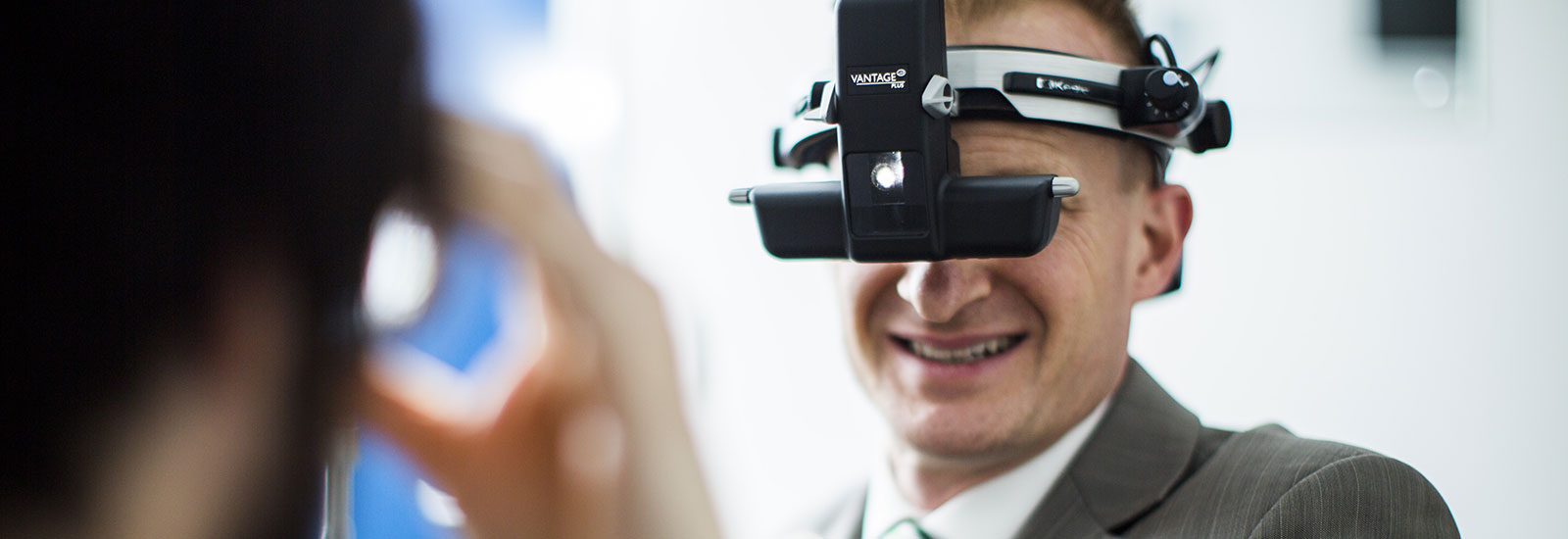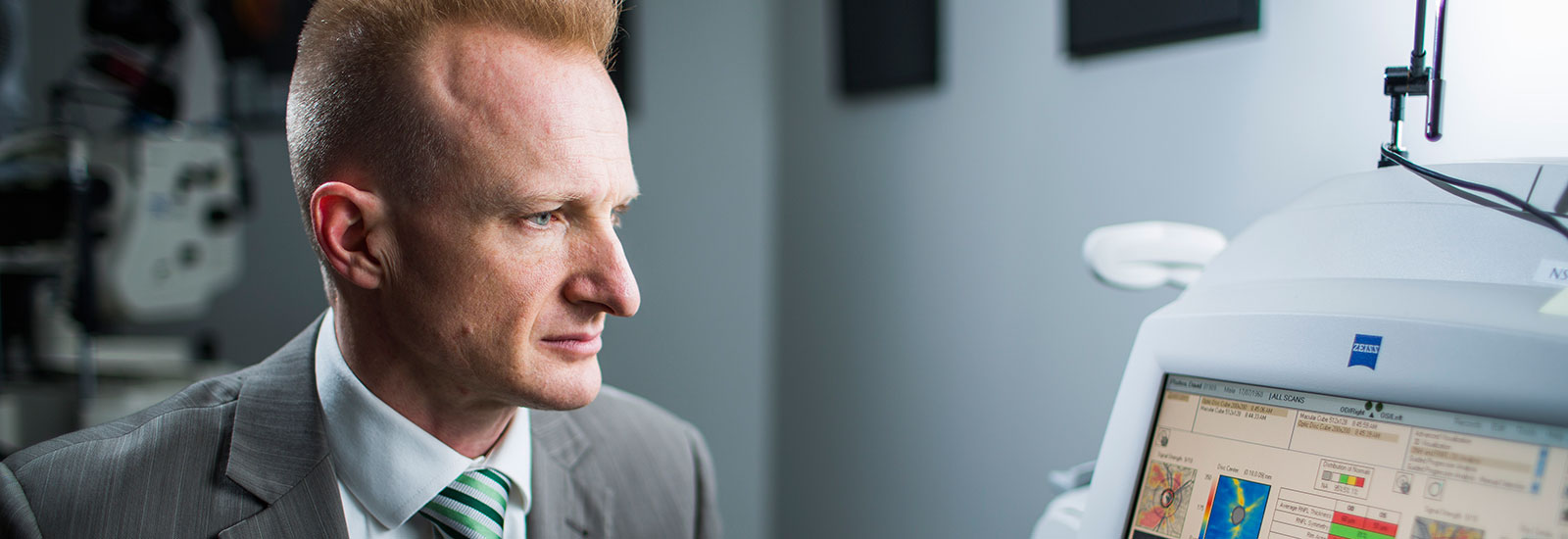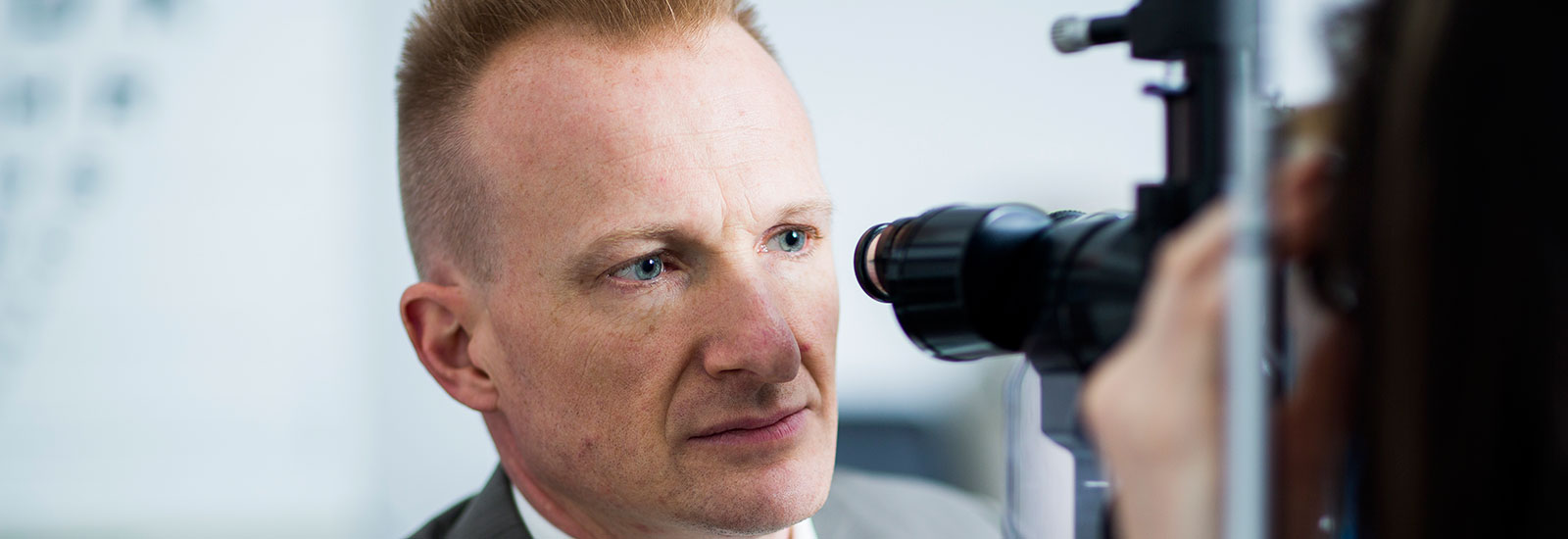







Glaucoma is a condition which affects the optic nerve in the back of the eye. In this condition, the optic nerve becomes progressively damaged and can no longer function properly. The peripheral vision becomes affected first, but this gradually involves the central vision and eventually total blindness occurs.

Optic nerve in Glaucoma: courtesy of National Eye Institute, National Institutes of Health
It is generally an asymptomatic condition and is often detected incidentally by your optometrist or ophthalmologist during a routine eye examination. Detection and diagnosis require a comprehensive assessment of the structure and function of the optic nerve and other structures of the eye. Your optic nerve is assessed clinically by directly observing it and the intraocular pressure (eye pressure) is measured. The function of the optic nerve is then assessed using a visual field machine and the structure of the optic nerve may be assessed using a scanning laser machine known as an OCT (optical coherence tomography). Lastly the thickness of the cornea may be measured (to ensure the accuracy of the intraocular pressure measurement) and the drainage channels in the eye may also be examined. Once these measurements have been performed, your ophthalmologist will be able to determine if you have glaucoma and how best to manage it based on the findings of the examination.

Visual Field in Glaucoma: courtesy of National Eye Institute, National Institutes of Health
Glaucoma is associated with the pressure in the eye, but whilst half of patients with glaucoma have high eye pressure, the other half have normal eye pressure. Nevertheless, the treatment is the same and that is to lower the eye pressure in order to slow the progression of the disease and prevent blindness. Glaucoma cannot be cured, but early detection, appropriate management and diligent follow up by your ophthalmologist can prevent blindness..
If you have glaucoma, there are many effective treatments which your ophthalmologist can recommend, however, each of them are designed to treat glaucoma by lowering the intraocular pressure. Treatments include eye drops, laser to the drainage channels and glaucoma surgery. Your ophthalmologist will discuss with you which of these is the appropriate choice for your individual circumstances.
Eye drops
These act to lower intraocular pressure by either decreasing the amount of fluid (aqueous) produced in the eye (e.g timolol, brinzolamide, dorsolamide and brizolamide) or by increasing the amount of fluid leaving the eye (e.g latanoprost, travoprost, tafluprost, bimatoprost or pilocarpine).
Laser
Your ophthalmologist may recommend laser depending of the type of glaucoma which you have. If you have narrow drainage channels, you may be offered YAG peripheral iridotomy laser, which will create a tiny pressure-release opening in the periphery of the iris (the coloured part of the eye). If you have open drainage channels, you may be offered selective laser trabeculoplasty (SLT) laser. Cyclodiode laser is another form of laser for glaucoma, however it is usually only used as a last resort for very advanced cases in which no other form of treatment has been successful.
Surgery
If drops or laser have not worked or are not appropriate for your individual circumstances, you may be offered glaucoma surgery. This may either be Minimally Invasive Glaucoma Surgery (MIGS), such as an IStent Inject or a Xen implant; it may be trabeculectomy surgery, in which a new outflow channel is fashioned in the eye wall; or alternatively, Molteno tube surgery, in which a small plastic tube is used to create the new outflow channel and convey fluid (aqueous) out of the eye.
© 2017 Allergan. Used with Permission